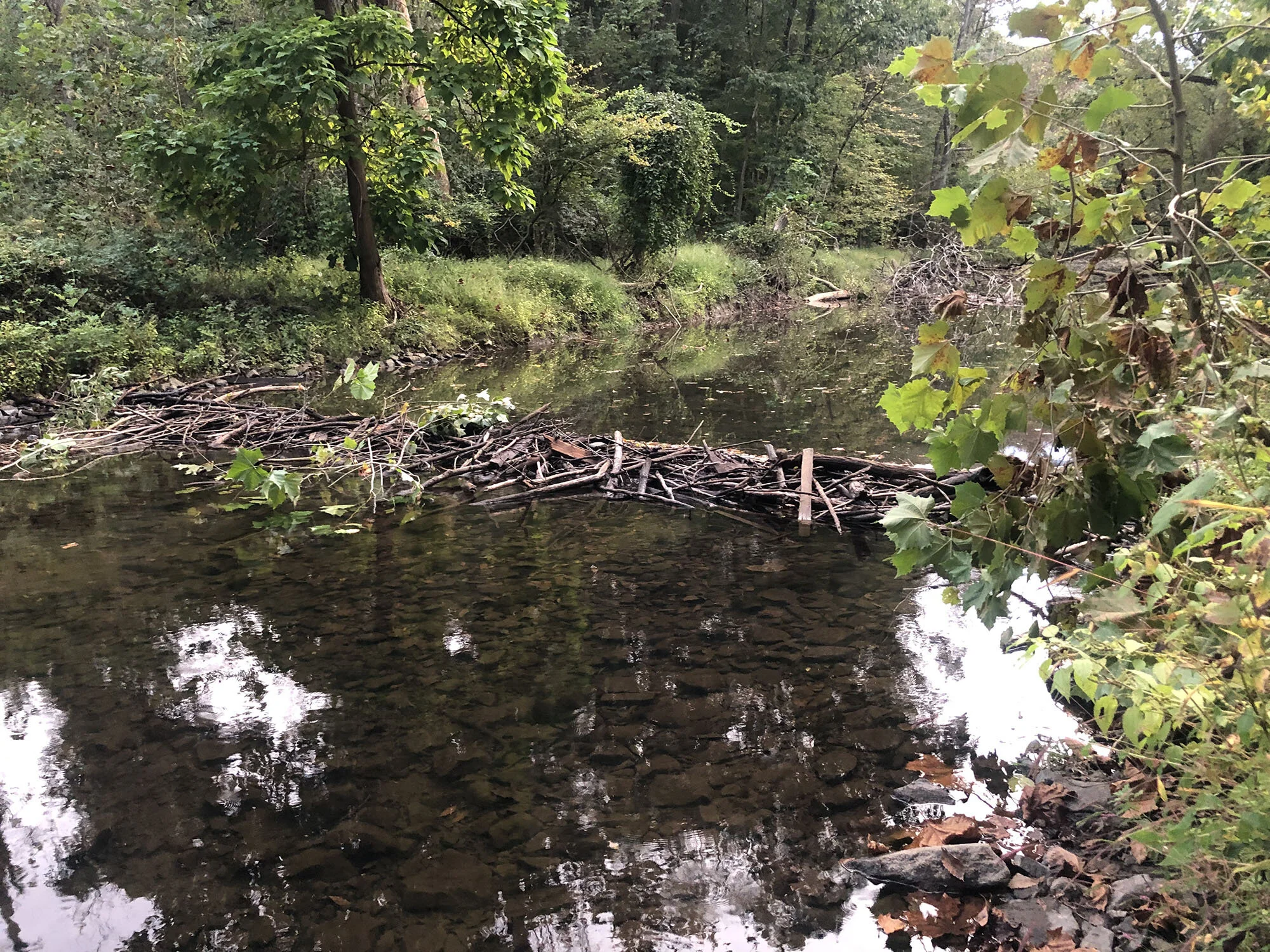Wildlife Sightings: September 20 - October 4, 2019
Things should start to get interesting right about now. — “Mississippi,” by Bob Dylan
Readers may recall that previous articles referenced the Crum Woods beavers’ “lodge”; a lodge is an unassuming pile of sticks on creek bank, easily mistaken for storm debris. But now, our resident beavers appear to be settling in for the long haul. Recent dusk walks along Crum Creek revealed a full-on beaver dam spanning the width of the creek. At dusk on Sunday evening two beavers were busy as, um, beavers, toiling about on their project. At dusk on Monday, the dam was noticeably higher, and a creek bank tree has been gnawed down immediately upstream of the dam (photograph). This project presents numerous educational opportunities over the coming months. Will the dam withstand a big storm? Will it create new wetlands? Which species will move into such wetlands? Engineering, hydrology and ecology lessons await us.
My other observations since the last article include, from the Crum Woods: three American redstarts, a female common yellowthroat, two magnolia warblers, a few red-eyed vireos; a dozen or so northern flickers congregating for migration; and painted turtles basking on logs in the creek. And from my own yard: a black and white warbler and an eastern screech owl (heard). Warblers species migrate in bands — first come the American redstarts and black and white warblers, both of which should peter out shortly. The season ends in late October with an onslaught of yellow-rumped warblers. Numerous species move through in between, so keep looking. With the autumnal equinox just behind us, several weeks of prime warblering remain.
On the non-birding front, Jonathan Hodgson submitted three bug photographs: a bedraggled giant swallowtail butterfly, perched with rapidly flapping wings on the tithonia in his garden, an orb spider and a mantis, often commonly called a praying mantis. However, resident insect expert Colin Purrington confirmed that it’s an invasive Chinese mantis, and he recommends killing them, as they eat monarch butterflies, hummingbirds and native Carolina mantises. He posted an article on identifying and distinguishing native and invasive mantid species.
Julie C. Ellis of Swarthmore submitted photographs of a red-spotted purple butterfly taken near CADES, a differential grasshopper on goldenrod in the wildflower garden in Swarthmore’s town center, a short-tailed shrew and a brown snake.
Please send reports and photographs of your observations from within Nether Providence Township and Rose Valley, Rutledge and Swarthmore boroughs by using the form below.







